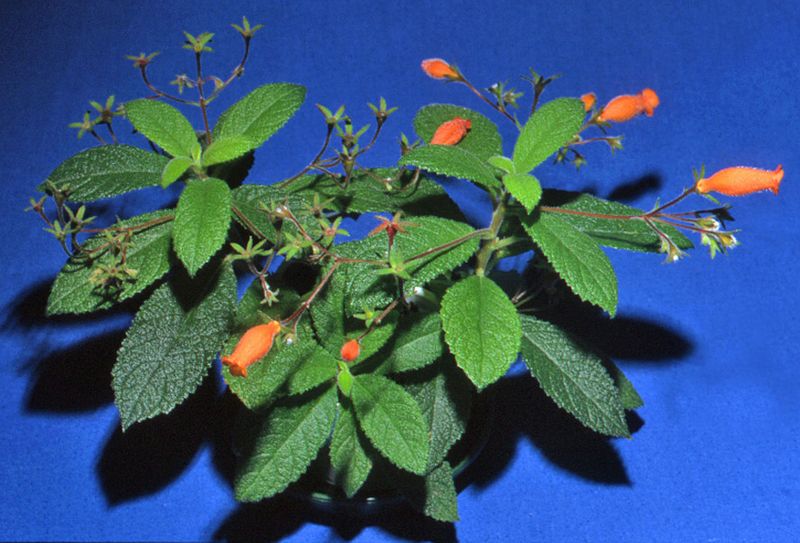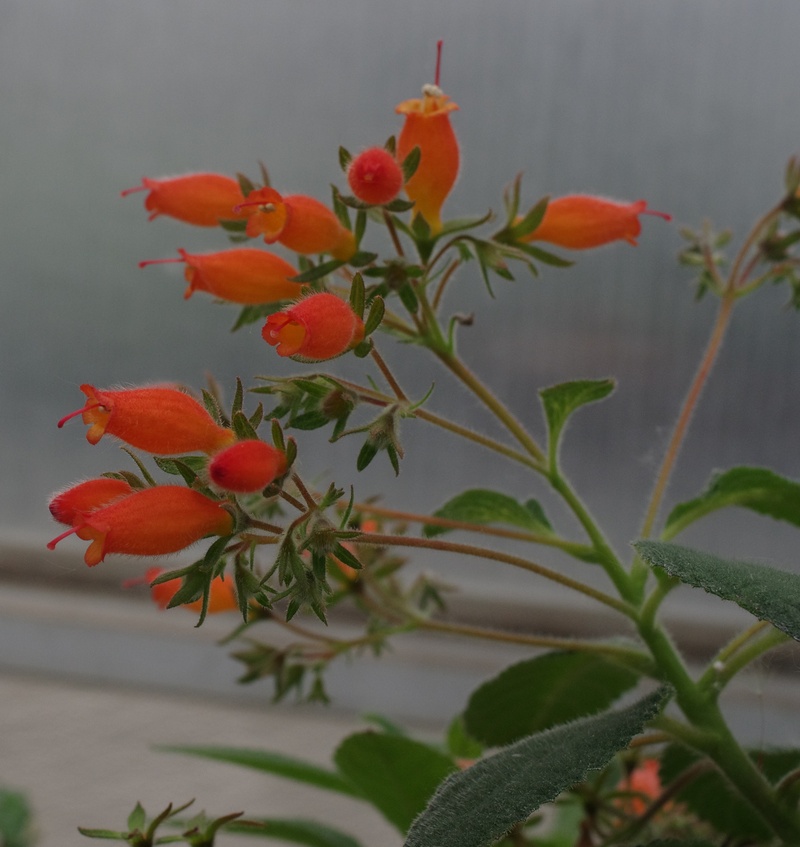One difference between the generic concept presented here and those of Skog (2012) is a complex of three red-flowered species that are more recently (Clark et al., 2019, 2020) recognized as belonging to Rhytidophyllum. It is important to note that Morton (1957a; 1957b) and early publications by Skog (1976) are congruent with the generic concepts presented here. Ideas on generic concepts have changed, and phylogenetic or evolutionary trees are an essential method for accepting or rejecting classifications based on relationships. In the example presented here, the presence of red flowers is not a shared derived character, and it does not suggest a close relationship – especially in gesneriads that share the same geographic range.
These three species (Rhytidophyllum earlei, R. lomense, and R. rupincola) are often misplaced by horticulturalists as members of Gesneria because of their red tubular corollas. In contrast, these three species have red tubular flowers but also have features that are typical in Rhytidophyllum. The filaments of Rhytidophyllum earlei, R. lomense, and R. rupincola are adnate to the corolla tube with clusters of barbate hairs at the base of filaments.
Thus, the flowers are red (not typical in Rhytidophyllum), but the filaments are barbate above the zone of adnation to the corolla tube (typical in Rhytidophyllum). Photographs and descriptions provided the next page explain this remarkable example of convergent evolution, and how this has resulted in the back-and-forth of their generic placement as members of Rhytidophyllum and Gesneria. These three species were the basis for the discrepancy between recognizing one large genus (sensu Wiehler, 1983) versus two distinct genera (sensu Skog, 1976). A recent dissertation explored these discrepancies in more detail (Watson 2015), and a simplified summary is provided on the next page.


